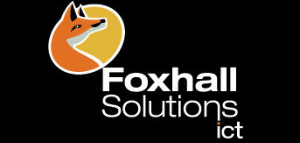Most business phone systems can ‘group’ user extensions so that a call to a single number will ring on several phones – making a ‘ring group’ (also known as a ‘call group’). This feature allows a customer to call into a company’s accounts, sales, or support departments – where the first available ‘expert’ can help them.
While a lot of businesses use this facility – [in my experience] it’s not being used to the full. Here are some ways to make the most of the ‘ring group’ features in your phone system:
Direct Dial numbers
Foxhall can issue as many direct dial numbers as you need for your business (on any UK geographical area code). These numbers might be used on business cards to enable calls directly to key people in your company, or, may just as easily be aimed at call groups. Your website’s contact page might provide direct dial numbers so callers can get through to your sales, accounts, or customer service departments.
Auto-Attendant (IVR)
Alternatively – many companies like to have a single contact number and put their callers into an Auto-attendant asking them to key different option numbers for different departments. Again those ‘departments’ can be ring groups, made up of staff who can help with specific caller issues.
Caller Identity
Modern phone systems can show the number of the caller and present that as caller info on the answering phone. If the caller’s name & number are stored in the phone system contact list, then the phone can also show the caller’s name. It’s possible to identify a caller and have their call routed to a priority ring group where they can be given top-level attention or expertise. Nonpriority callers will still be routed through the normal IVR and call group structure.
Ring Group Identity
 An incoming call can be presented on a phone with [caller ID and] a ring group name. That’s useful when you are giving your caller multiple options in the same department e.g. a vehicle leasing business might want to differentiate between ‘private’ and ‘commercial’ leasing – but – the sales staff dealing with the caller are the same. The agent will see the incoming call identified as ‘Private’ or ‘Commercial’. That enables the agent to use a different greeting and select the appropriate marketing & sales resources to work with their caller. Our customer ‘Air Manage Suffolk‘ uses this feature to identify calls into the various services offered by their business …
An incoming call can be presented on a phone with [caller ID and] a ring group name. That’s useful when you are giving your caller multiple options in the same department e.g. a vehicle leasing business might want to differentiate between ‘private’ and ‘commercial’ leasing – but – the sales staff dealing with the caller are the same. The agent will see the incoming call identified as ‘Private’ or ‘Commercial’. That enables the agent to use a different greeting and select the appropriate marketing & sales resources to work with their caller. Our customer ‘Air Manage Suffolk‘ uses this feature to identify calls into the various services offered by their business …
Overflow groups
If a caller has not been answered, they can overflow into a ‘catch-all’ ring group where somebody should be available to take the call. In this case, we can name the ring group so that staff know they are picking up an overflow call – apologise and manage the caller appropriately.
Identical call groups (under different names)
There will be many call-flow scenarios where the target ring group is made of the same people. Even though the caller dials a different number, or, chooses a different IVR option, the same group of phones will ring. While it’s tempting just to make a single ring group, and aim these different calls at it, the agents won’t get the advantage of seeing specific ring group names. By making several copies of the ring group, you can simply edit the name of the group to suit the specific call route used to get to it. That way – as above – your staff know what options have been selected by the caller to get them through.
Note that Ring Groups are not the same as Call Queues … but that’s another story …
Contact us here at Foxhall Solutions to talk about how to make it easy for your customers to do business with you.


Recent Comments